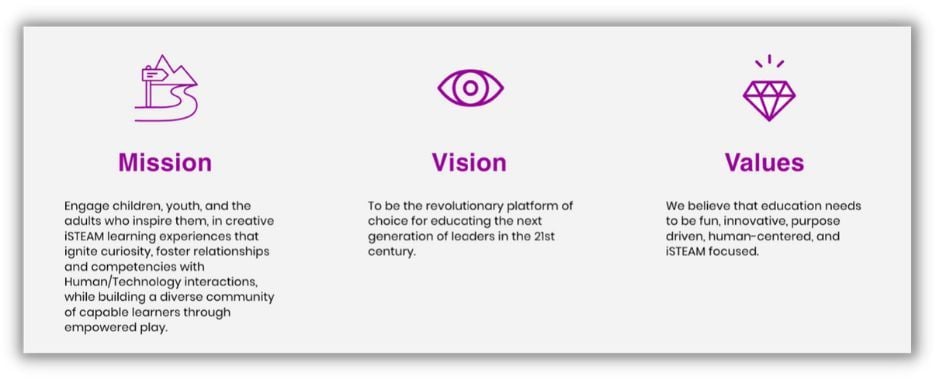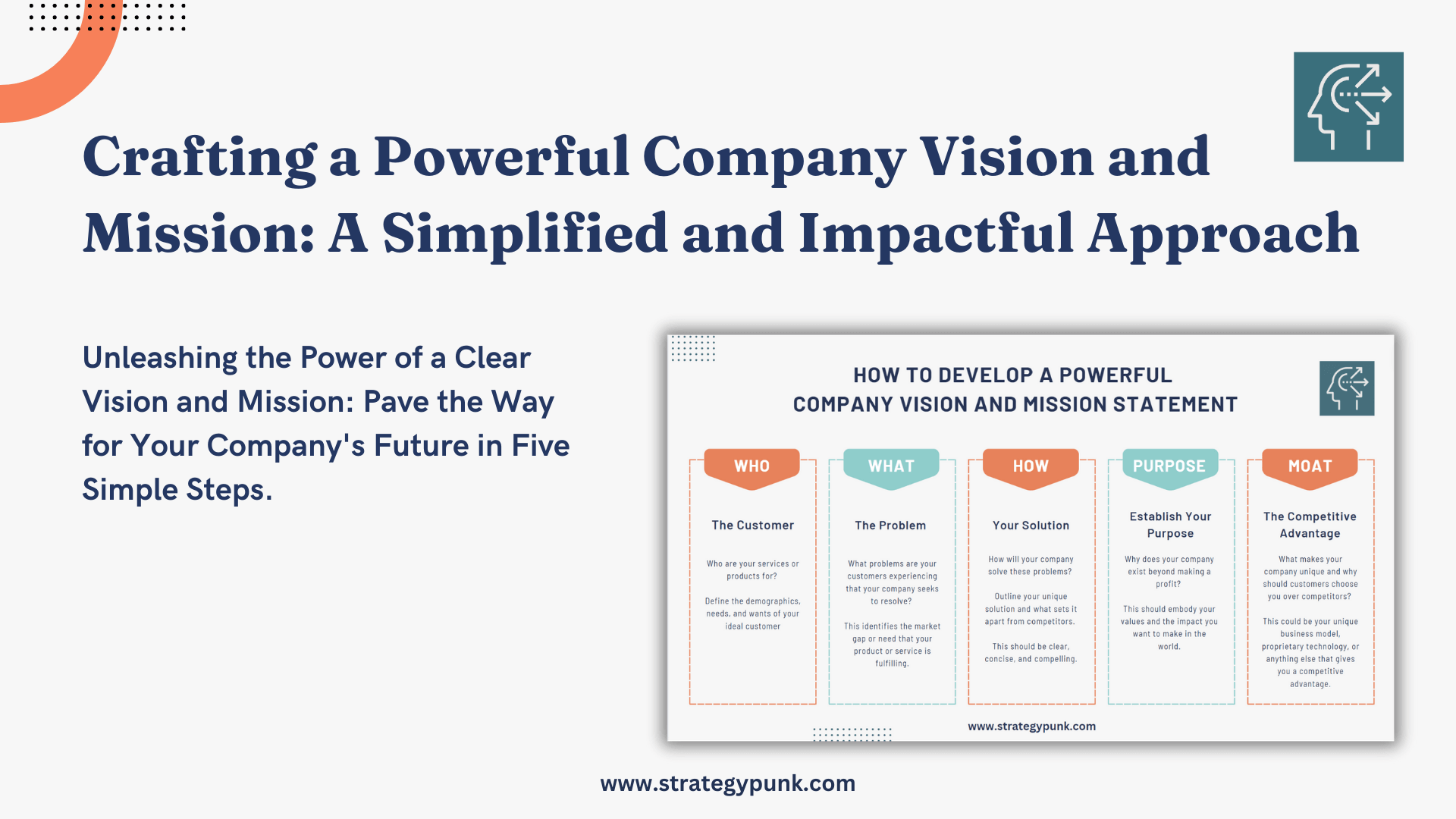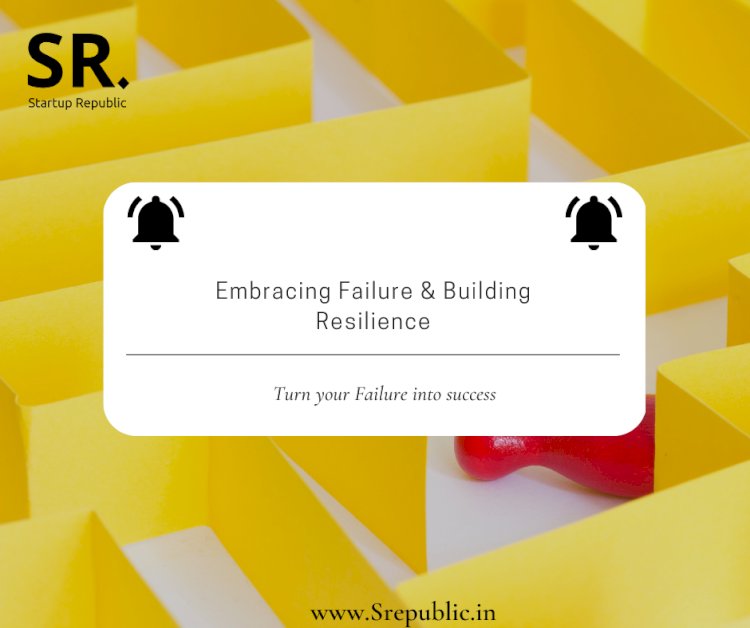
Crafting Your Business Foundation: A Guide to Mission and Vision Statements for New Ventures
Starting a new venture is an exhilarating journey, filled with innovative ideas, endless possibilities, and often, a touch of delightful chaos. Amidst the excitement of product development, market research, and securing initial funding, it’s easy to overlook what might seem like "fluffy" exercises: crafting a Mission Statement and a Vision Statement.
However, for any new business, these aren’t just corporate jargon; they are the foundational pillars that will guide every decision, inspire every team member, and define your company’s very essence. Think of them as your venture’s North Star – providing direction and purpose from day one.
This comprehensive guide will break down what mission and vision statements are, why they’re critical for new ventures, and how you can craft powerful, authentic ones that truly resonate.
The Power of Purpose: Why Mission & Vision Matter for Startups
Many new entrepreneurs focus intensely on the "what" – what product or service they’ll offer. But truly successful ventures also master the "why" and the "where." This is precisely where mission and vision statements come into play.
They provide:
- Clarity: A clear understanding of your business’s core purpose and future aspirations.
- Direction: A roadmap for strategic decision-making, ensuring every action aligns with your ultimate goals.
- Motivation: A compelling reason for you, your team, and future employees to wake up and work passionately.
- Identity: A distinct personality for your brand that resonates with customers and investors.
- Focus: A way to filter out distractions and prioritize what truly matters.
Let’s dive into each one.
Section 1: Your Guiding Principle – The Mission Statement
Think of your Mission Statement as the heartbeat of your company right now. It describes what your business does, who it serves, and why it exists. It’s your company’s purpose, its reason for being, articulated in a concise and impactful way.
What is a Mission Statement?
A mission statement is a brief, action-oriented declaration that defines the company’s fundamental purpose, its primary business, and the needs it seeks to fulfill for its customers.
Key Characteristics of a Strong Mission Statement:
- Present-focused: It describes what you do today.
- Action-oriented: It uses verbs that convey activity.
- Concise: Short, memorable, and easy to understand.
- Specific: While not overly detailed, it gives a clear idea of your business.
- Customer-centric: Often highlights the value provided to customers.
- Unique: Reflects your company’s distinctive approach.
Why is a Mission Statement Crucial for a New Venture?
For a startup, a mission statement is like laying the cornerstone of a building. It:
- Defines Your Identity: It forces you to articulate what your business is from the very beginning.
- Aligns Your Team: Even if it’s just you, it sets a clear purpose. As you grow, it ensures everyone is pulling in the same direction.
- Guides Decision-Making: When faced with choices (e.g., new product features, marketing channels), you can ask: "Does this align with our mission?"
- Communicates Value: Helps potential customers, partners, and investors quickly grasp what you offer and why it matters.
How to Craft Your Mission Statement
Crafting your mission statement involves a bit of introspection and collaboration (if you have co-founders). Ask yourself the following questions:
- What do we do? (Your core business activity)
- Who do we serve? (Your target audience or customers)
- What value do we bring? / What problem do we solve? (The core benefit or impact)
- What makes us unique? (Your differentiating factor – optional, but powerful)
Step-by-Step Process:
- Brainstorm Keywords: Write down words that describe your business, your customers, the problems you solve, and the feelings you evoke.
- Draft Initial Sentences: Try combining the answers to the questions above into several different sentence structures.
- Refine and Condense: Cut out unnecessary words. Make it punchy and clear. Aim for one to two sentences, ideally.
- Test It Out: Read it aloud. Does it sound authentic? Is it easy to understand? Does it capture your essence?
Mission Statement Examples
Here are a few simplified examples, including a hypothetical new venture:
-
Well-Known Example (Simplified):
- Google: "To organize the world’s information and make it universally accessible and useful." (What: Organize info; Who: The world; Why: Accessible/useful)
- IKEA: "To create a better everyday life for the many people." (What: Better life; Who: Many people; Why: Through affordable home furnishings – implied)
-
Hypothetical New Venture Example: "Eco-Wear Threads" (Sustainable Clothing Startup)
- Initial Draft: "We make clothes that are good for the planet and look nice for people who care about sustainability." (A bit clunky)
- Refined Mission Statement: "To provide stylish, sustainably-produced apparel that empowers conscious consumers to express their values."
- What: Provide stylish, sustainably-produced apparel.
- Who: Conscious consumers.
- Why: To empower them to express their values.
Section 2: Your Ultimate Destination – The Vision Statement
If the mission statement is about what you do today, the Vision Statement is about where you want to be in the future. It’s your company’s ultimate dream, its long-term aspiration, painted in vivid, inspiring colors.
What is a Vision Statement?
A vision statement is an aspirational declaration of what an organization ultimately hopes to achieve or become. It outlines the desired future state of the company and its impact on the world.
Key Characteristics of a Strong Vision Statement:
- Future-focused: It describes where you’re headed in 5-10+ years.
- Aspirational: It’s big, bold, and inspiring – something to strive for.
- Clear and Concise: Easy to grasp and remember.
- Challenging: Pushes the boundaries of what seems possible.
- Envisioned Impact: Often describes the positive change or impact you want to create.
Why is a Vision Statement Crucial for a New Venture?
For a startup, a vision statement is your beacon, guiding you through uncertain waters. It:
- Sets the Ultimate Goal: Provides a clear destination, motivating you and your team through challenges.
- Inspires and Motivates: Helps attract passionate talent and keeps existing team members engaged with a shared future.
- Informs Long-Term Strategy: Helps you make strategic decisions that align with your grander ambitions.
- Attracts Investors: Shows investors your long-term potential and the scale of your ambition.
- Fosters Innovation: Encourages creative thinking about how to reach that desired future state.
How to Craft Your Vision Statement
Crafting your vision statement requires you to dream big and think about the lasting legacy you want to create. Ask yourself:
- What does success look like for our company in 5-10 years? (Beyond just profit – what impact?)
- What kind of world do we want to help create?
- What will be our ultimate achievement or contribution?
- How will our customers’ lives be different because of us?
Step-by-Step Process:
- Dream Big: Don’t limit yourself. Imagine your venture achieving its wildest, most positive impact.
- Identify Core Impact: What is the fundamental change or outcome you want to see?
- Draft Aspirational Phrases: Write down words and phrases that convey a sense of future accomplishment, transformation, and inspiration.
- Condense and Polish: Combine phrases into a concise, powerful statement. Make it memorable.
- Check for Inspiration: Does it make you feel excited and driven? Will it inspire others?
Vision Statement Examples
Here are a few simplified examples, including our hypothetical new venture:
-
Well-Known Example (Simplified):
- Microsoft: "A computer on every desk and in every home, running Microsoft software." (Bold, clear future state, achieved!)
- Amazon: "To be Earth’s most customer-centric company, where customers can find and discover anything they might want to buy online." (Ultimate state, focus on customer)
-
Hypothetical New Venture Example: "Eco-Wear Threads" (Sustainable Clothing Startup)
- Initial Draft: "We want to be a big company that sells a lot of sustainable clothes in the future." (Lacks inspiration and specificity)
- Refined Vision Statement: "To lead the global shift towards a fashion industry that is entirely regenerative, empowering every wardrobe to be a force for good."
- Future State: Lead global shift to regenerative fashion.
- Impact: Empower every wardrobe to be a force for good.
Section 3: Mission vs. Vision – The Dynamic Duo
While distinct, mission and vision statements are two sides of the same coin. They work in tandem to provide a complete picture of your company’s purpose and direction.
Here’s a quick comparison:
| Feature | Mission Statement | Vision Statement |
|---|---|---|
| Focus | What we do now | What we want to become |
| Timeframe | Present-day | Future (5-10+ years) |
| Purpose | Defines core purpose, operations, and values | Inspires and provides long-term direction |
| Nature | Action-oriented, practical | Aspirational, inspirational |
| Answers | "What do we do?" "Who do we serve?" "Why do we exist?" | "Where are we going?" "What will we achieve?" "What impact will we have?" |
| Example Analogy | The map for your current journey | The ultimate destination you’re trying to reach |
How They Work Together:
Your mission is the daily work you do, the services you provide, the products you build to move you closer to your vision. Your vision is the grand, inspiring goal that motivates your mission. Without a mission, the vision is just a dream. Without a vision, the mission lacks ultimate direction.
Section 4: Why These Statements Are Non-Negotiable for New Ventures
You might be thinking, "I’m just trying to get my first customer! Do I really need this now?" The answer is a resounding YES. For new ventures, these statements are even more critical.
1. Internal Clarity and Focus for You (the Founder)
- Decision Filter: Every decision, from hiring to marketing to product features, can be filtered through your mission and vision. Does it align? If not, reconsider. This saves precious time and resources.
- Motivation & Resilience: Startup life is tough. There will be setbacks. Your mission and vision serve as a powerful reminder of why you started, providing the resilience to push through challenges.
- Strategic Planning: They are the starting point for all your strategic planning. Your business model, marketing strategy, and operational plans should all flow from these core statements.
2. Attracting and Aligning Your Early Team
- Shared Purpose: As you bring on your first employees, contractors, or co-founders, these statements instantly communicate what you stand for and where you’re headed.
- Culture Building: They lay the groundwork for your company culture, attracting individuals who resonate with your values and purpose.
- Employee Engagement: People are more engaged when they feel part of something bigger. Your vision provides that "something bigger."
3. Communicating Value to Customers
- Brand Identity: They define your brand’s essence, helping you craft compelling marketing messages that stand out in a crowded market.
- Trust and Connection: Customers are increasingly choosing brands that align with their values. A clear mission and vision help them connect with your "why."
- Unique Selling Proposition (USP): While not explicitly a USP, they often underpin it by clearly stating what you do and aspire to be, distinguishing you from competitors.
4. Impressing Investors and Partners
- Credibility: A well-articulated mission and vision demonstrate that you’ve thought deeply about your business beyond just the immediate product.
- Long-Term Potential: Investors want to see not just a good idea, but a scalable business with a clear future. Your vision provides that long-term perspective.
- Shared Vision: They help potential partners understand how collaborating with you aligns with their own goals.
Section 5: Tips for Crafting Truly Effective Statements
Beyond the "how-to," here are some practical tips to make your mission and vision statements truly shine:
- Keep it Concise and Memorable: Aim for brevity. Short, punchy statements are easier to remember, internalize, and communicate.
- Make it Inspiring (Especially the Vision): Your vision should evoke emotion and excitement. It should make people want to be part of your journey.
- Be Unique and Authentic: Don’t just copy what others do. Your statements should genuinely reflect your venture’s personality, values, and distinct approach.
- Involve Your Co-Founders/Early Team: If you have partners, collaborate! This ensures buy-in and a shared sense of ownership. Different perspectives can enrich the statements.
- Use Simple, Clear Language: Avoid jargon or overly complex sentences. The goal is clarity, not corporate speak.
- Focus on Impact, Not Just Products: Instead of "We sell great coffee," think "We foster community through exceptional coffee experiences."
- Don’t Overthink It Initially: Get a solid draft down. You can refine it later. The act of thinking through it is more important than achieving perfection on day one.
- Review and Refine Periodically: As your venture evolves, your statements might need slight tweaks. Schedule an annual review to ensure they still accurately reflect your purpose and aspirations.
Section 6: Living Your Mission and Vision
Writing powerful statements is only half the battle. The true power comes from living them every single day.
- Display Them Prominently: Put them on your website, in your office (if you have one), in your pitch deck, and in your internal communications.
- Integrate into Hiring: When interviewing, discuss your mission and vision. Look for candidates who genuinely connect with them.
- Guide Strategic Planning: Use them as the starting point for setting quarterly and annual goals. Do these goals align with your long-term vision and daily mission?
- Inform Product Development: Ensure new features or services serve your mission and move you towards your vision.
- Drive Marketing and Branding: Let your mission and vision infuse your messaging, design, and overall brand voice.
- Regularly Revisit and Discuss: Talk about them in team meetings. Use them as a lens to evaluate performance and celebrate successes.
Conclusion: Your Venture’s Blueprint for Success
Crafting a mission and vision statement for your new venture isn’t a formality; it’s a fundamental step toward building a successful, purpose-driven business. These statements are more than just words on a page; they are the strategic compass that will guide your decisions, inspire your team, and communicate your unique value to the world.
Take the time to truly define your "why" and your "where." The clarity, focus, and inspiration they provide will be invaluable as you navigate the exciting, challenging, and ultimately rewarding journey of entrepreneurship. Start today, and give your new venture the powerful foundation it deserves.



Post Comment